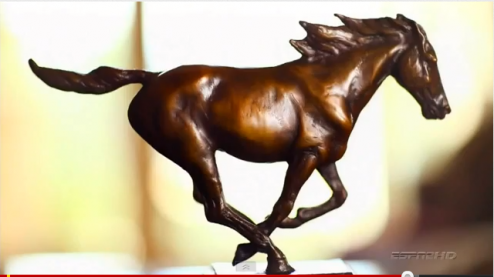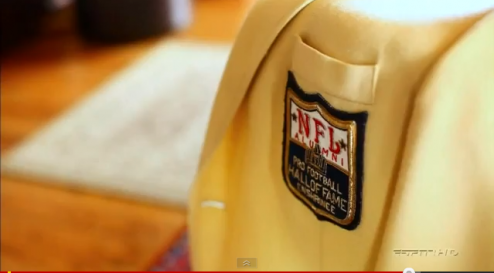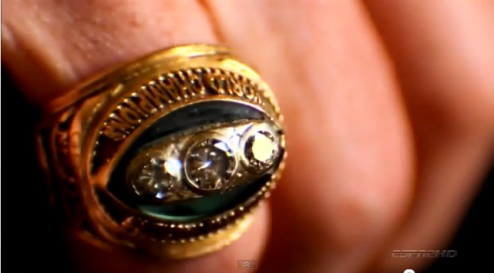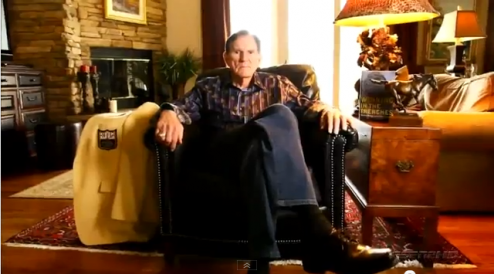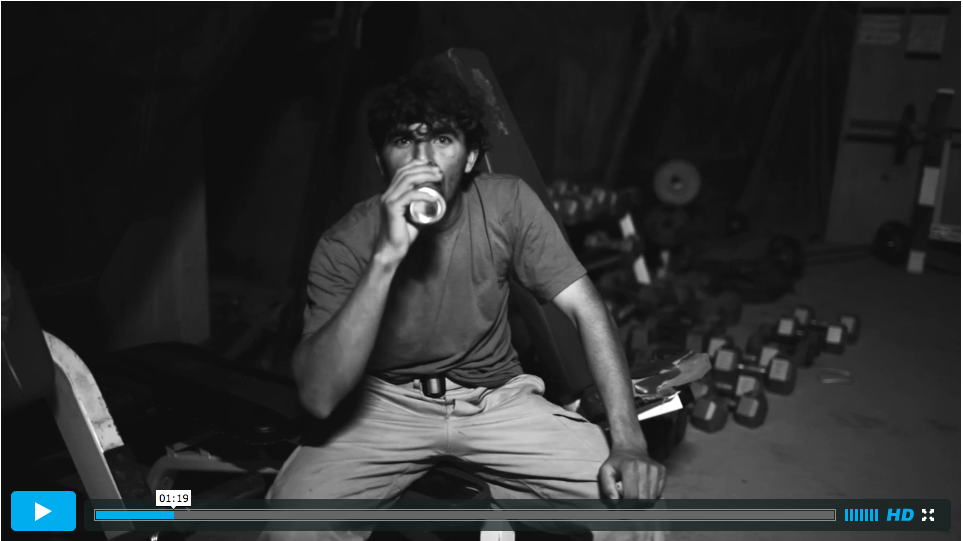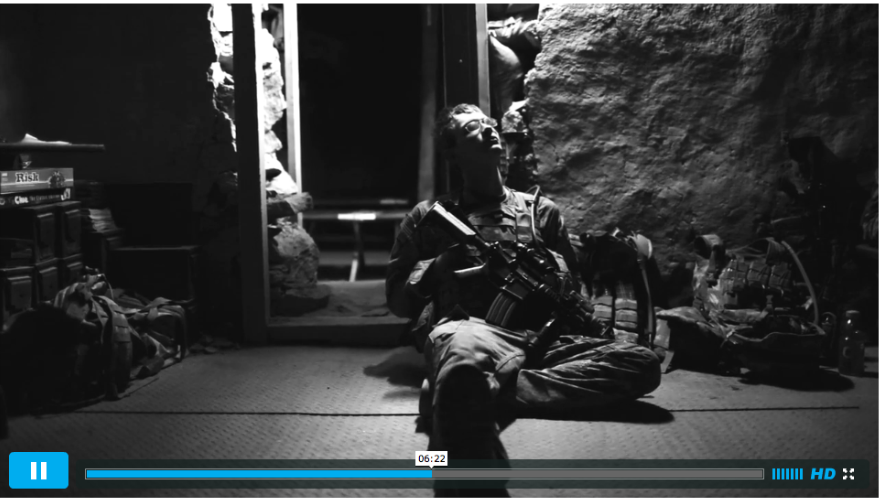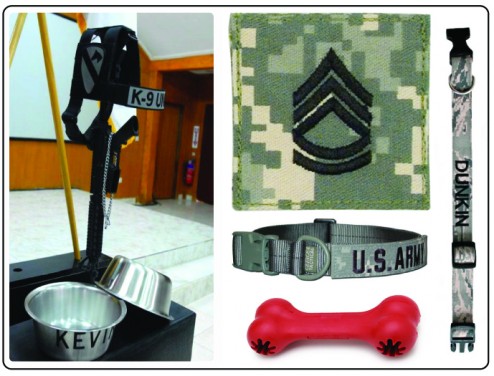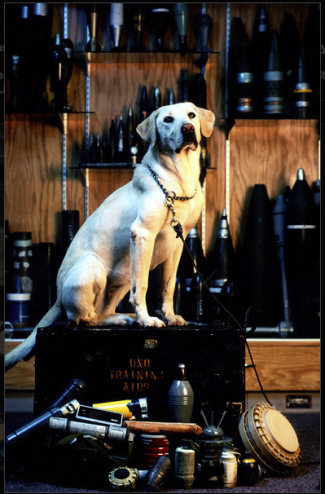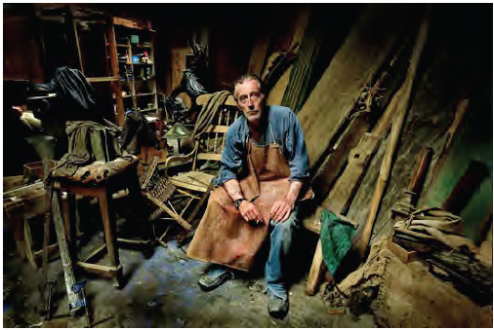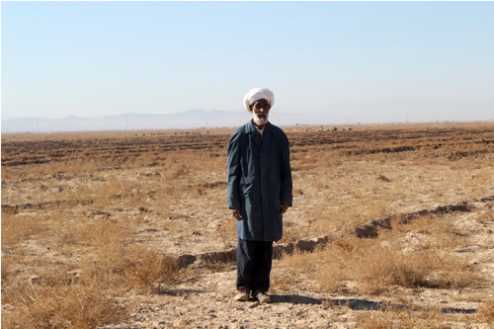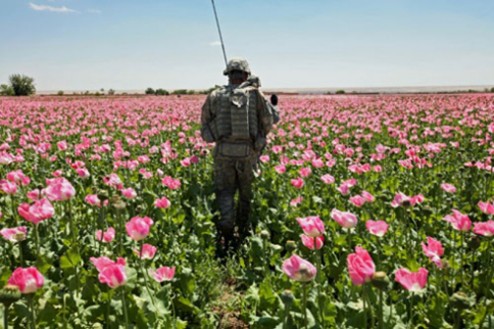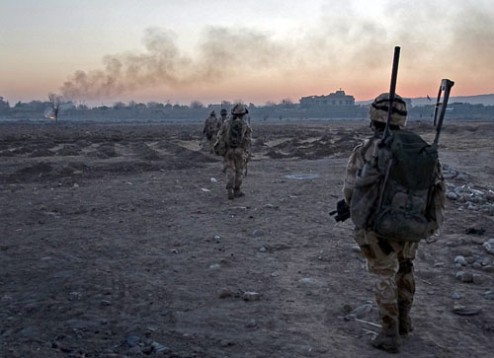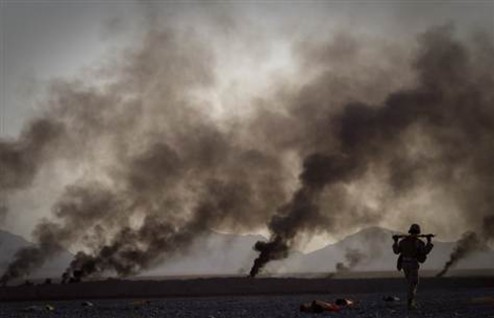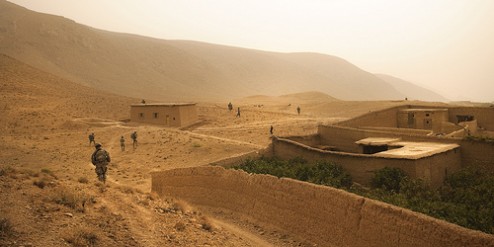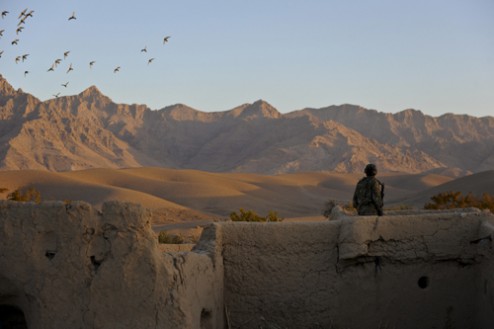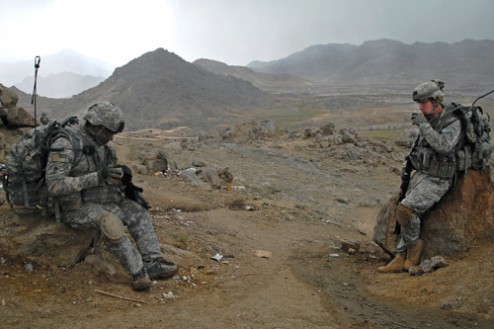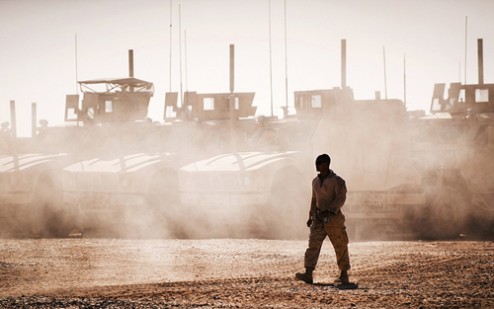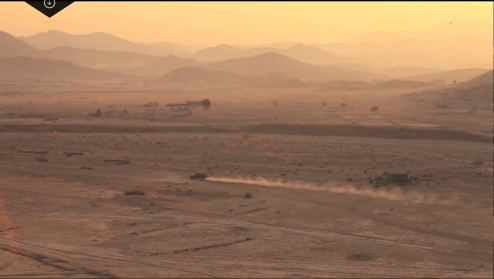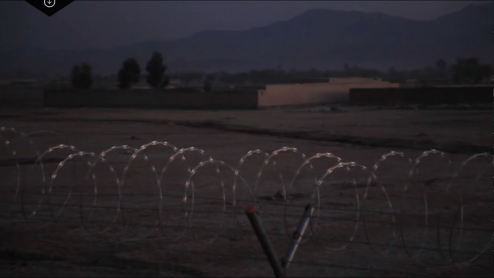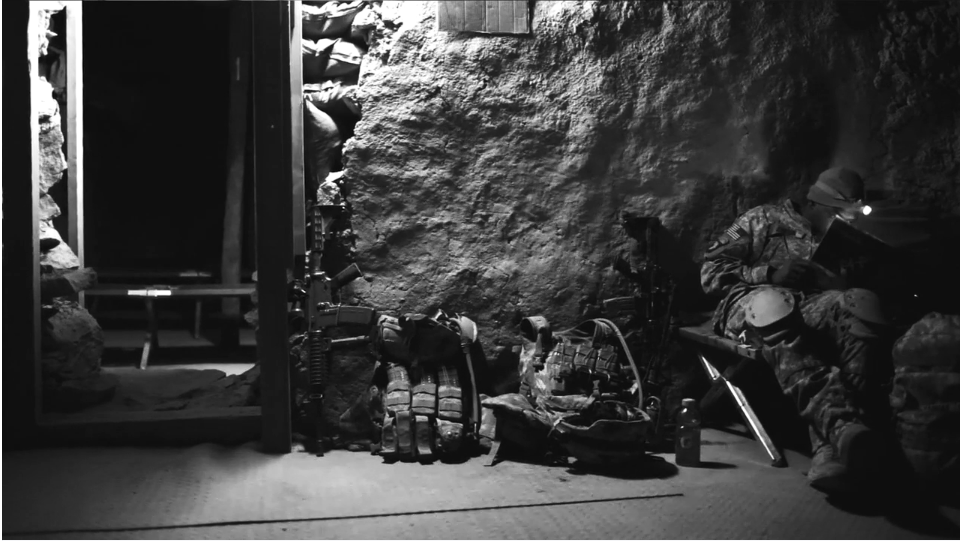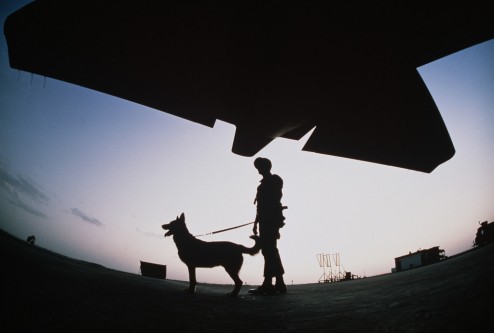OVERVIEW
The goal for us is to create a signature visual style that helps define the show as something totally unique. That is going to be achieved in two distinct ways that are separated by the two very different environments in which we will be shooting.
There is the life outside the wire and life inside the wire. Those two environments mirror the stark contrast between the external and internal life of the MWD teams we are following. These two opposing realities echo the juxtapositions of brutality and tenderness that makes the life of a MWD handler so unique. Our goal is to create a visual vocabulary or framework that highlights those opposing realities.
These realities are not mutually exclusive. The more successful we are at capturing the insanity of combat, the more profoundly we will feel bonds between dog and handler. The deeper we penetrate into the internal life of the handler, the more relatable the experience of combat will be.
Visually drawing a distinction between two realities in conflict will subconsciously draw attention to the difference between the soldier and the person. The more we relate to the person and the dog, the more we root for the soldier and the MWD.
OUTSIDE THE WIRE
We’re not going to tell you how to shoot action. You guys know how to do that better than anyone, plus conditions on the ground could override anything we could dream up sitting behind a desk. Within the chaos of war, we will distinguish ourselves by the courage you show in the field and the tools you use to capture the action.
Between the K9 cameras and our Flir night optics and the fact that we ride shotgun with dogs into combat, we are assured of presenting combat in a manner that has never been seen before.
Of course, the focus while patrolling for Bombs or Bad guys should be on the MWD team. However, we should be stealing reaction shots and looks of concern from other members of the unit.
Remember that the dog team is a portal into the wider experience of the unit as a whole. When the dog finds a bomb, he’s saving the lives of his entire unit. When a dog team says an area or road is clear, every member of the team trusts him. To that end:
Establish other faces within the units early through reaction shots and looks of concern.
Tie members of the unit to the dog visually and emotionally. If you notice that other soldiers within the unit are relating to the dog in a particularly strong way, feel free to interview them as well.
Beyond the soldiers who are relating to the dogs emotionally, be sure to tie in the soldiers who are working directly with the MWD team professionally:
- COMMANDERS: Before a patrol, be sure to shoot out the commander laying down the goals for a particular patrol during a debriefing with a unit. Whenever possible during patrol, be sure to visually tie in commander’s reaction to how the mission is transpiring.
- SPOTTERS: Often times, MWD teams will employ spotters. Spotters are essentially an extra pair of eyes and ears that allows the Handler to put more focus on his dog and not have to worry about Snipers, insurgents, etc.
- ROOMMATES/BUNK-MATES: Anyone who shares proximity to the MWD team INSIDE the wire should be accounted for on camera OUTSIDE the wire.
- PASSENGERS: In the absence of these soldiers listed above, please establish fellow passengers in vehicles so we establish characters who share the experience of a particular mission with the MWD team
The guiding principle here is to establish other players within a mission in order to exponentially expand the avenues for story which spoke out from the MWD team.
INSIDE THE WIRE
The action is the sizzle. It’s what audiences will expect to see…and they’re gonna get plenty of it. But what will be unexpected is the emotional potency inside the quiet moments shared between the dog and his handler. This is where we have an opportunity to hit audiences in the gut in a way they will never forget.
What will make these moments unforgettable is that they will stand in such stark contrast to the frenetic chaos of combat — moments of tenderness that somehow bloom within the context of the hellish absurdity of war. These moments will most frequently (though not always) occur within the more controlled environment inside the wire
If the uncontrolled chaos outside the wire is defined by the unique tools we use to capture it, and the courage we demonstrate in shooting it, then the quiet moments inside the wire will be defined by a more controlled and deliberate style. This style will stand in stark contrast to the action of combat.
This visual contrast will manifest itself 3 main areas: movement, detail and composition.
MOVEMENT
A good example of this deliberate movement and eye for detail can be seen in this clip from Gimme Shelter by Albert and David Maysles. The pacing and eye for detail in this clip are something worth emulating on base. This is a small moment that takes you inside the vast interior landscape of the characters on screen. You imagine what they are feeling and thinking. Sure it has the benefit of a killer song. But you guys have the benefit of tender moments between a man and his dog after they’ve both just been shot at. Have faith in the weight of your subject matter and make choices that focus our attention on details that reveal interior character.
Aside from being one of the greatest films of all time, it is also a master class on making decisions in camera. Observe below at the 1:58 mark how they hold shots with discipline, even when confronted by the subject. This kind of confident camera work is truly inspiring.
Then, when they notice a revealing detail, they move at it decisively. (check out the precise moment at the 1:25 mark below).
The fact that a jet setting rock star has boots that have walked a thousand miles says something about Keith Richards as a character and the gypsy life he leads. This is a small detail that reveals character in ways that no sound bite can. Please look for details like this.
DETAILS
What a soldier surrounds himself with can tell us a lot about him in the same way that the photos on the inside door of a high school locker say a lot about a kid. Shoot locked off, well-composed shots of those things. It could be comic books in his footlocker that reveal the kid inside the soldier. It could be photos of his kid, or ”born to kill” written in Sharpie on the side of his helmet, or tattoos. These are details that betray the individual inside the uniform.
Give us a vast toolkit of these locked off, well-composed objects and they will become part of the visual vocabulary of the show.
In post we’ll reach into that tool kit and use these compositions liberally to set up a new scene with a character and provide punctuation within an act. This is kind of a hallmark of ours. We employed this technique throughout Pony Excess. We’d cascade or tumble through several of these locked off details before landing on portraiture of a new character. We recommend shooting these using the 5d.
Click the youtube link below to see a sample of this technique @ the 1:26:09 mark.
http://youtu.be/U5KScikibkc?t=1h26m8s
COMPOSITION
In the same sample, you can see examples of portraiture @ 1:26:18. We should do something similar for each one of our principle characters (and even some secondary characters that pop bigger than others). With this in mind, we’d like you to check out this short film, “Americanistan”, by clicking here. It’s only 12 minutes long but there are some decent ideas going on in here. The password is: Baylough
In particular, we’d like you to pay attention to shots that could pass as this style of portraiture within the FOB @ 1:19 and 6:22. (Please ignore the fact that these are B&W).
Snobs call this Tableaux Vivant or a living picture. We just call it cool. Whatever you call them, used in combination with the DETAILS mentioned above, they are a stylish device that can be used to punctuate the edit so we can establish new characters or signpost a whole new scene. If you shoot multiple versions of portraiture with each main character, we will add them to our toolkit so we can use them throughout the show. This too will become part of the shows visual vocabulary. Here too, we would recommend using the 5d for the portraiture as well as the details.
We intend to shoot portraiture that shows our subject in an environment that informs character — all in a single image:
Images are shot wide angle and are meant to frame the subjects in iconic framings.
Portraiture will be shot very wide and we should feel like we are capturing them in their inner sanctum.
Talk of living tableaus and the Maysles may seem pretentious, but its only pretentious if it doesn’t work. And this will work. In fact, it will kick ass.
DOG DETAILS & PORTRAITURE
Please give us a similar set of details and portraiture for the dog as well. We want to set the dog up as an equal member of the team. Assigning the same visual tools to the dog will subtly and subconsciously reinforce the notion that the MWD and the Handler are partners and equals. A dog bowl, a kong, a harness with the k9’s name on it. The k9’s rank marked on the harness, etc. In the interest of being overtly obvious, what follows are examples of the types of images that we’re looking for, not of the style of photography. Again, these objects/details should be shot using good glass and the 5d.
As we do for his human partner, make sure the objects we shoot surround the dog in his portraiture. This shot is the wrong orientation but you get the idea…
MWD TEAM PORTRAITURE
Please do a pass of this with the K9 and Handler together — again, surrounded in team portraiture by the same individual objects/details. In general, this portraiture should feel like we captured them in their native environment, the place where they share their most intimate time together. To get the idea, imagine the amateur shot below but photographed in the team’s inner sanctum of the tent, and using good glass in a style more reminiscent of the second image below.

ESTABLISHING SHOTS
Establishing shots will help lend the project the widescreen grandeur that it deserves. Think Terrence Malick, a la the Thin Red Line.
We should make an effort to bank tons of establishing shots of each base using the 5d.
Again, we could use the same technique of tumbling or cascading through a series of locked off (ish), well-composed shots. Imagine that as we tumble through 2 or 3 of these shots, there is a progression from a desert landscape outside the base to a wide establishing shot of the entire base to a more specific location within the base. (Again, please ignore the fact that one image is B&W).
They can be used to establish time passing, time of day, new weather conditions or even something less literal, like danger on the horizon. Click here to check out how an otherwise innocuous set of establishing shots in the first 10 seconds of this clip are combined with good sound design to sign post a new chapter of imminent danger.
HERO PORTRAITURE & SILHOUETTES
In addition to the more intimate portraiture detailed above, please shoot some iconic and heroic portraiture of the Dog and Handler together. As opposed to the wide angle intimacy of the inner sanctum, this needs to be shot outdoors on the grounds of the FOB. It should be shot at the end of a long lens so we can compress the background and give the team a heroic vibe.

We will also need a grab bag of great silhouette shots for each team.
Other Camera Notes:
GO PRO VIDEO JOURNAL: Let’s try giving go pros to the soldiers and give them a sit down lesson in lighting and framing. Encourage them to use it to keep a record of their private thoughts — like a video journal.
FLIP CAMS: Similarly, let’s arm each of the soldiers with Flip Cams for any ancillary footage they want to give us, but let’s be sure not to use the Flips in place of The Go Pro’s for the barracks/diary type footage.
General Notes on Story
- These impressionable kids have a vague theoretical sense that war will make the bond grow tighter, but they really have no idea what that means in practice. A handler that is experiencing combat for the first time (as all of ours are) will come to lean on that dog in ways he can’t possibly predict. By contrast, if we were following a dog handler who had deployed once before but with a different dog, then he wouldn’t bond as tightly with the second dog because — like first love — there is no substitute for the first time. A handler who has deployed once before with the same dog will become more attached during a second deployment, but the bonding curve won’t be as steep as the first time around. All our handlers are experiencing this for the first time. This is the unifying principle that links these stories together. The gap between what these young guys think they know and what they will know in 7 weeks is the arc of our story.
- Don’t allow someone to use military acronyms without asking them to explain what it means. I would let them finish the thought first so they keep up their energy and then follow up and have them restate it a second time using the full words rather than the acronym.
- As an obvious reminder, please make sure to work to get the subjects up to speed on the habit of speaking in clear, complete thoughts.
- We mentioned at training that we have the latitude to change the focus to other MWD teams you meet at your respective bases. Even if we agree that is the right course of action, please make sure we don’t abandon what we’re following without getting a complete through line.
- It’s okay if we lose a soldier for a couple of episodes…we could “produce” guys at the home base talking about that soldier being on patrol and what could be happening, as we build a sense of anticipation for that character to come back home.

